Yacimiento de Dólmenes de Hwasun (화순 고인돌군 유적) [Patrimonio Cultural de la Humanidad de la Unesco]
14.2Km 2022-04-07
Hyosan-ri 64, Dogok-myeon, Hwasun-gun, Jeollanam-do.
El Yacimiento de Dólmenes de Hwasun está situado cerca de las cascadas de la cordillera que une Hyosan-ri de Dogok-myeon y Daesin-ri de Chunnyang-myeon. Según diversos estudios, 135 de las 980 rocas de Hyosan-ri en Dogok-myeon son dólmenes. También hay unas 100 rocas planas que aún mantienen su forma. En Daesin-ri de Chunnyang-myeon hay unos 124 dólmenes, de entre 3.309 rocas. Hay al menos 300 que mantienen su forma, y 23 dólmenes fúnebres. Lo que hace especiales los dólmenes de Hwasun es su abundancia, con 596 dólmenes en este pequeño distrito, incluyendo la mayor losa de Corea. El Yacimiento de Dólmenes de Hwasun fue registrado como el Patriminio Cultural de la Humanidad por la Unesco el 2 de diciembre de 2000, junto con los yacimientos de Gochang y Ganghwa.
YangDongHo Traditional House (Hanok 152) (양참사댁(양동호 가옥 / 한옥152))
14.3Km 2025-07-24
24, Darasil-gil, Dogok-myeon, Hwasun-gun, Jeollanam-do
Yangchamsa House, also known as Yangdongho House, is a hanok stay in Hwasun, Jeollanam-do - a 300-year-old yangban dwelling now designated a national folk cultural asset. There are five guestrooms of different sizes in the anchae and sarangchae. The house hosts exhibitions and concerts from time to time, and can be hired for weddings, banquets or workshops. There’s a traditional cultural experience program. Nearby must-visit places are Hakjae Old House and Hwasun Dolmen Site in the village, and Unjusa Temple (a 15-minute drive away).
Parque Ecológico del Lago Gwangju (광주호 호수생태원)
14.6Km 2025-06-16
Chunghyosaem-gil 7, Buk-gu, Gwangju
Aldea Pyeongchon de Gwangju (광주 평촌마을)
14.8Km 2025-06-16
Pyeongchon-gil 15, Buk-gu, Gwangju
La Aldea Pyeongchon comprende cuatro pequeñas comunidades ubicadas en el norte del monte Mudeungsan: Donglim, Daman, Useong y Dakmoe. La principal actividad económica es la agricultura, sobre todo el cultivo ecológico de arroz. Por su naturaleza pura y limpia, aquí habitan muchos animales en extinción como la nutria coreana. La aldea también es conocida por la cerámica coreana que se producía desde los tiempos de la dinastía Joseon y ofrece talleres simples y fáciles para los visitantes.
Hwanbyeokdang (환벽당)
14.8Km 2023-02-09
Hwanbyeokdang-gil 10, Buk-gu, Gwangju
Museo Literario Gasa Munhak (한국가사문학관)
15.1Km 2021-12-28
Gasamunhak-ro 877, Gasamunhak-myeon, Damyang-gun, Jeollanam-do.
Este museo se encuentra en Damyang, de la provincia Jeollanam-do, una región que posee tierra fértil, un paisaje natural espléndido y cantidad de reliquias y patrimonios culturales. Durante la época de Joseon, cuando la mayoría de las actividades literarias se realizaban en hanmun (caracteres chinos), comenzaron a aparecer poesías escritas en el idioma coreano, y así, también ha florecido la literatura Gasa Munhak (antiguo verso coreano).
Los versos más famosos son el “Gwandong Byeolgok”, y “Sami Ingok” del poeta Jeong Cheol, y, también existen 18 obras legendarias de autores famosos y anónimos, pertenecientes a la región de Damyang. De tal manera, siendo la meca de la literatura antigua de Corea, el museo se ha instalado con el fin de preservar y difundir la importancia de este patrimonio cultural a las generaciones actuales.
El museo está formado por varias instalaciones anexas, las salas de exposición clasificados por los diferentes autores históricos, las áreas destinadas a la colección de materiales informativos, sala de exhibición de los productos regionales y la casa de té tradicional.
Jardín Soswaewon de Damyang (담양 소쇄원)
15.4Km 2023-01-04
Soswaewon-gil 17, Gasamunhak-myeon, Damyang-gun, Jeollanam-do.
Soswaewon es un jardín público representativo de la dinastía Joseon en el cual podemos ver la belleza tradicional coreana. Este jardín fue construido por Yang San-bo después de renunciar su ambición por la fama y el poder al ser asesinado su profesor Jo Kwang-Jo por razones políticas. Soswaewon significa "jardín limpio y transparente" y fue donde los marineros disfrutaban de la música y de tiempos placenteros entre los bosques de pinos de este lugar.
Soswaewon tiene un arroyo que en las colinas de los costados se plantaron árboles boksa y variadas plantas, e hicieron que el agua transparente del valle corriera por debajo de la cerca a través de piedras. Además por arriba del agua del valle hay un puente de madera lo cual suma elegancia al paisaje. La cascada que cae del molino de agua forma una buena armonía entre la naturaleza y lo artificial, es un jardín donde reprodujeron en forma exacta el hermoso paisaje de las montañas. El jardín está a unos 150 m de la carretera. El camino hacia la entrada al jardín está decorado con árboles. Recorriendo este camino por el lado izquierdo aparece también un pequeño valle.
Cementerio Nacional 18 de Mayo (국립 5.18 민주묘지)
15.5Km 2024-07-17
Minju-ro 200, Buk-gu, Gwangju.
El Cementerio Nacional 18 de Mayo, ubicado frente al monte Mudeungsan, es el símbolo de libertad y democracia y es un cementerio donde se encuentran los cuerpos de los caídos durante la lucha por la democracia en mayo de 1980. En 1980, las víctimas eran traídas en carretas o camiones de basura y eran sepultadas en el cementerio de Mangwol-dong. En 1997 este cementerio fue exhumado y transferido al Cementerio Nacional 18 de Mayo. La fecha es recordada para la revalorización del deseo de democracia del pueblo coreano.
Para acceder al cementerio necesitará pasar por el Portal de la Democracia, construido al estilo tradicional coreano. Pasando por la amplia Plaza de la Democracia, llegará al Pasaje de la Conmemoración. Continúe el recorrido para llegar frente a la Torre Conmemorativa, una figura circular (4 m de alto) de una mano cerrada, que simboliza la resurrección de una nueva vida. Bajo la torre, hay un pequeño altar con inciensos que demuestran respeto. Después de la Torre Conmemorativa, encontrará trabajos de relieve a ambos lados. Hacia la derecha podrá ver un lugar donde se guardan relicarios con imágenes y tablas monetarias, y enfrente está la Puerta de la Historia, que muestra las imágenes de aquellos días. Con este material visual podrá entender esta parte de la historia de Corea. Después de recorrer estas secciones de la historia coreana, disfrute de una agradable caminata por los alrededores del cementerio.
3917 Majung / 3917 마중
16.2Km 2025-08-13
42-16, Hyanggyo-gil, Naju-si, Jeollanam-do
Located in Gyo-dong, Naju-si, Jeollanam-do, 3917 Majung is a cultural space combining a hanok (traditional Korean house) cafe, modern cultural experiences, and hanok guesthouse. The name “3917 Majung” refers to its goal of “welcoming (majung) the modern culture of Naju in 1939 anew in the year 2017.” Spread out on a wide land area of 13,223 m2 are four buildings of Nanpajeong, Sarangchae, Mokseowon, and Siseoheon. All buildings take after the unique combination of Japanese- and Western-style housing commonly seen in the late Korean Empire period.
Nanpajeong is a pavilion constructed during mid-Joseon period, named after its most famous guest Jeong Seok-jin (pen-name: Nanpa), a scholar who led an uprising against Japanese imperialism in late Joseon period. There are two ondol (under-the-floor heating system) rooms in total, separated by a central wooden-floor hall (daecheong), one supporting 3 to 4 guests, one ideal for 2 to 3 guests. The restroom, which is also fitted with a shower booth, is located outside the building.
Eunhaengmok Room 1 and 2, which are housed in the Sarangchae building, are tatami rooms with balcony. Sarangchae’s shower and restroom is located in the building. Mokseowon is likewise made up of three tatami rooms, separated by open floor space and an attic. The shower and restroom is located outside the building. Siseoheon houses a 4-person room and the largest room in the complex, capable of supporting more than 10 guests. There are 2 restrooms and 2 restrooms with shower facilities, making the building ideal for group events.
Jardín Myeongokheon Wollim de Damyang (담양 명옥헌 원림)
16.8Km 2024-12-05
Husan-gil 103, Goseo-myeon, Damyang-gun, Jeollanam-do.
Localizado en la eco-aldea de Husan-ri (Damyang, provincia de Jeollanam-do), el jardín Myeongokheon Wollim fue el jardín del erudito Oh Hui-do (1583-1623), de la dinastía Joseon, y servía como un simple santuario de campo donde los sabios daban conferencias, junto con el estanque de forma cuadrada en frente del pabellón que está rodeado de árboles con flores elegantes.
Myeongokheon (el nombre del pabellón) es la palabra para el sonido del jade cuando tintinea suavemente, describiendo el sonido del agua rompiendo suavemente a lo largo de la orilla del estanque. Los árboles florecidos alrededor del estanque incluyen pinos rojos entre otros, y al lado del riachuelo se encuentra una gran roca con el grabado de ‘鳴玉軒癸丑,’ en caracteres chinos donde pone 'Myeongokheonrim'.
En el lado derecho de Myeongokheon Wollim verá un árbol de 300 años, que es donde el rey Injo (1623-1649) de la dinastía Joseon ató su caballo cuando fue a visitar a Oh Hui-do. El jardín es tan bonito como el jardín Soswaewon y en 2009 fue designado Vista Escénica.
![Yacimiento de Dólmenes de Hwasun (화순 고인돌군 유적) [Patrimonio Cultural de la Humanidad de la Unesco]](http://tong.visitkorea.or.kr/cms/resource/03/2515703_image2_1.jpg)
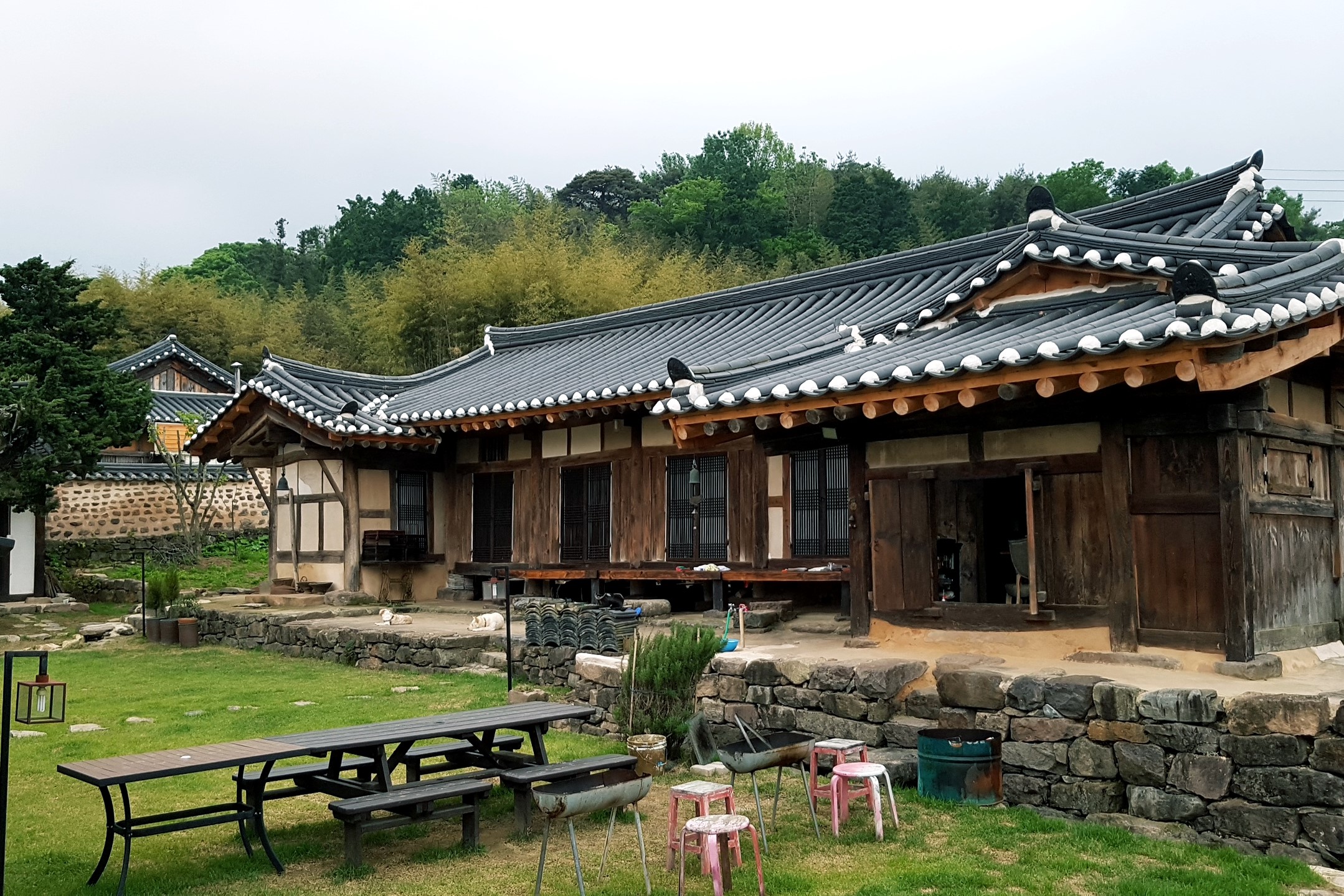
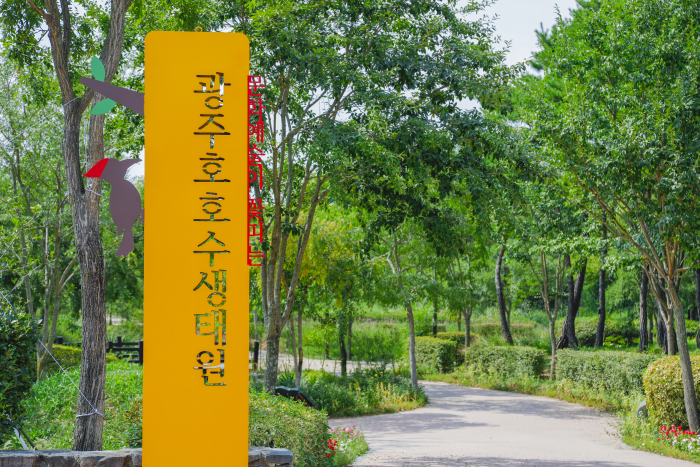
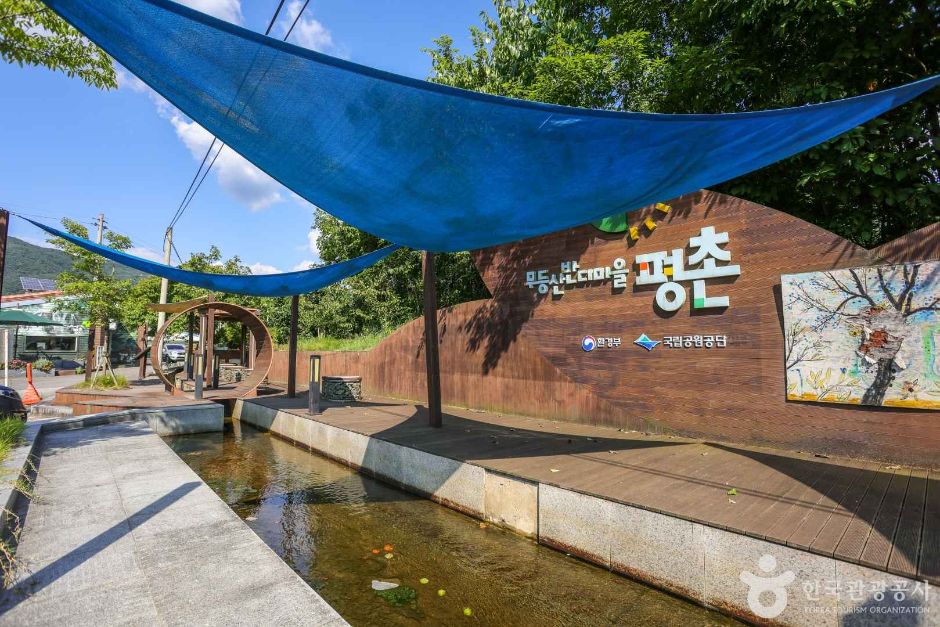

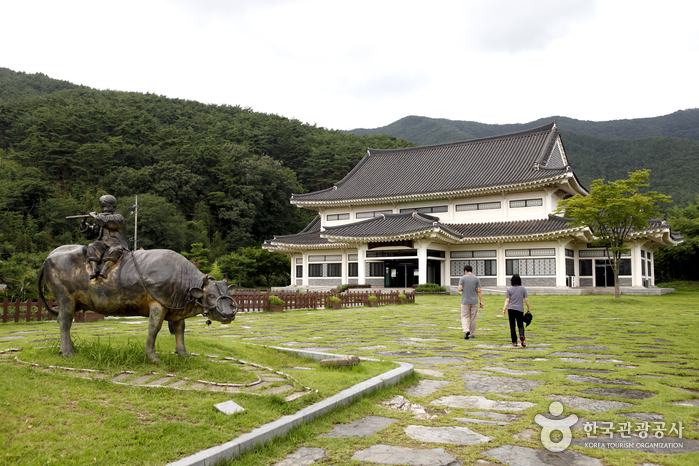
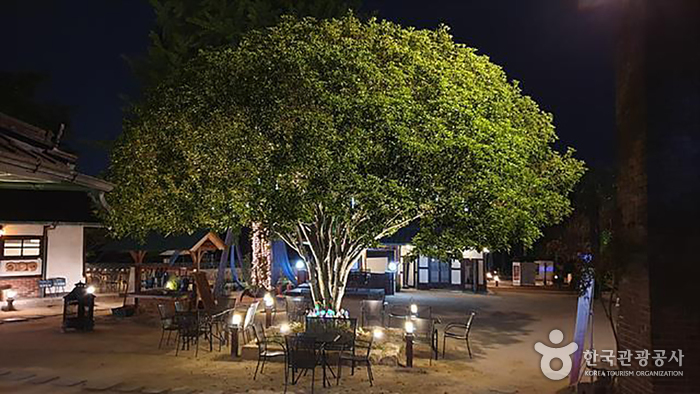
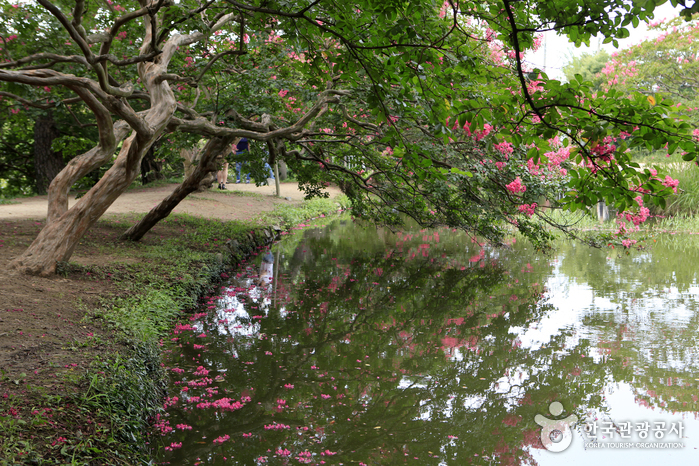
 Español
Español
 한국어
한국어 English
English 日本語
日本語 中文(简体)
中文(简体) Deutsch
Deutsch Français
Français Русский
Русский